#1 Online Marketing Agency
(604)305-3040
2069- 88 West Pender Street, Vancouver
9:00 AM - 6:00 PM
|
Free shipping is becoming a must strategy for those who want to thrive on online shopping. Many customers now expect to have those fees waived so they can purchase something from a particular website. In fact survey suggests that a merchant increase sales chance by 65% when customers do not have to pay for shipping charges. But as most us are aware, “there is no free lunch”. As retailers know, it is expensive to ship a parcel from One Point to the other. And for many different reasons, shipping carrier rates are increasing over time. What this means is: Someone must pay for those shipping costs. It’s well documented that if we provide a free service, this influences heavily on consumer behavior because clients have a perception that they are getting an amazing deal. There are many examples about this: Free Checked Bags when flying, Free coffee refills in Restaurants, Free samples in grocery stores… So nowadays we see many merchants selling their goods with shipping fees included at the transaction. 90% of online shoppers view free shipping as a major incentive to opt-in purchasing online, while 86% of abandoned carts happen because of shipping costs related to the order. But remember, there is no free lunch…so the truth is: these savings are typically hidden somewhere else. In order to apply the free shipping strategy, a business has to find the right balance of driving more conversions and keeping operations profitable. Playing the free shipping game means finding the right balance of driving more conversions and not breaking the bank. So, what options do small to mid-sized online retailers have? Those are the few options we often suggest our partners: a) Insert the shipping cost into your price This is Free Shipping 101. Raise your price to accommodate the shipping cost so you can provide the shipping for free. The key is to find the perfect balance of rising the prices of your products to the point that you can provide Free Shipping and not lose sales due to cost of the product. b) MOQ- Minimum Order Requirement You can make the client spend a certain minimum amount of dollars to activate free Shipping. This works wonders because shipping more products in one box will save you tons of logistics costs that you can pass it on to the customer as free shipping. Remember that the idea is to make the customer know he is getting a great deal, so making him put one extra thing or two in the cart works really well. By the way, 93% of customers will take action to qualify for free shipping! c) Keep an eye on your margins There is no point on getting into a transaction if you lose money after it is done right? So even though you want to increase the amount of sales by offering free shipping, you should only do it if you can actually afford it. Normally there is a small unwritten rule on ecommerce shipping: Things that are cheap, are hard to be shipped for free. Imagine a key that you sell for $8 and the shipping cost is $8. When the transaction is done, you won’t make any money. Your margins are different for each of your products, but make sure they do have a comfortable sales price that can offset the product cost itself so you can keep some of the margin. Conclusion
To be a successful ecommerce store you should try to go with the Free Shipping Strategy ASAP. Numbers are favoring those who make it successfully. There is not a simple solution that is suitable for all the online players, but they must be able to find the balance between sales volume, profitability and expenses. Ingols Digital helped a company in Vancouver to do this well. Vancouver Best Cookies was transformed from a simple bakery to a master in delivering yummy cookies for free while being profitable! Worth checking it out! Before sharing my story, I wanted to make a quick disclaimer. This, by all means, have nothing to do with how I judge or see stereotypes (good or bad) of the world… However, I just wanted to point out that analyzing the particulars of a specific region might help us understand some behaviors, and why not, stereotypes of particular areas of the world. Let's talk about Canada, for instance. This country is fascinating because it was basically founded on English and French customs and principles. When we study these two European countries, we realize they are so different from one another that they have a history of battling one another. And yet, Canada is, by many different standards, an inclusive society that cherishes differences! The French are mainly located in Quebec and New Brunswick. In contrast, the English are in all the other provinces in its majority. Go to Montreal, most of the people will speak French with you. At a restaurant, most of the menus are in French (except for some that are bilingual). Speak to a local and notice they use their hands while talking, just like French people! In Toronto, everything is in English, to the point that it feels like Quebec and Ontario are in two different countries. Would it make sense to establish a business in Quebec and put all the signages in English? Well, I am inclined to say no. Simply because your audience will be in, its majority, francophone! And if you make things harder to your client, marketing 101 teaches us that this is a no-no! Within the anglophone community, we also see a difference. Take Vancouver on the west coast. They speak the same language as Toronto - English! But when you get to know people in both cities, it feels like you are talking to two different beings from two different planets! Vancouverites love nature, to the point that you're likely to hear something about trees, nature, and CO2 emission (and real estate, always real estate) in any conversation! Torontonians' main priority has always been about work, work, and the Raptors winning the last NBA Title! How do we market the same product or service to those two different cities, even though they speak the same language? That's a marketing challenge, alright…but having this solved will be of great avail! In terms of online marketing strategy, this is gold! If we know what ticks each community, we can develop specific keyword analysis and personalize our SEO Services to the particular needs intrinsic to that specific region. Take, for example, a canoe reselling business that sells across Canada. Selling canoes in Vancouver might be as simple as putting up "Canoes for Sale" to boost traffic on Google! After all, they love canoeing there! The same canoe in Quebec could possibly be offered as "Canoë à Vendre", cuz well it's in French! Selling canoes in Toronto would require a more effective approach like - "Ways to disconnect from Stress" - because of the big city-no time vibe in Toronto. Having a canoe can be a great solution to decompress! My next example will touch on the cultural particulars of a country where we have many clients - Brazil (where people speak Portuguese, not Spanish!). Brazil is the biggest country in Latin America, with many big cities, spread thousands of miles apart. It's always interesting to see the different behavior patterns within each region. Take Sao Paulo and Rio de Janeiro, two of the country's biggest cities- apart from over 300 miles from each other. Sao Paulo was built over the sweat of industrial development and hardworking immigrants from Europe, Asia, and the Middle East. Rio was established as a former capital of the country, with bureaucrats and beautiful beaches bordering the Atlantic. Needless to say, because of the history of each city, their people are entirely different. Paulistanos (people from Sao Paulo) pride themselves on being hardworking and perceive the Cariocas (people from Rio de Janeiro) as the bon-vivant type and, to a certain extent, a bit lazy. Cariocas love the fact that the city has a more chill vibe, its people easygoing. They tend to see the Paulistas as no fun and uptight. When we try to build an online marketing strategy on the national level, catering to the specific regionalities of this continental Portuguese speaking country, what do we do? When building our SEO Strategies, understanding that the Paulistas are more urban-oriented will require us to crack our heads and develop keywords related to this attribute. The same thing applies to the samba-loving, beach-going Cariocas. Coming up with an SEO plan to sell to them will require a deeper learning of casual behavior! Crazy stuff happens when two big cities in the same region but that are so different from each other collide. Paulistas refer to cookies as bolacha. Bolacha for Cariocas is called biscoito. Stereotypes fly over our ears - Paulistas on Cariocas: "Yep, they don't work… They just want to have fun…only think about going to the beach, play soccer and samba all day"! Cariocas on Paulistas: "Those guys are uptight - they are jealous cuz we have beautiful beaches, and we can enjoy it whenever we want"! I have to go back to my disclaimer above! I'm not trying to judge those stereotypes, whether one may perceive them as derogatory or true. However, as a strategy focused Online Marketing Agency, I just believe that within those stereotypes lie great information that can be explored to build a very successful Marketing Strategy! Rival cities in the world: New York vs. Boston, Toronto vs. Vancouver, Johannesburg vs. Cape Town, Rio de Janeiro vs. Sao Paulo, Shanghai vs. Beijing. It is not all about sports anymore! Effective Marketing is about knowing rivalry attributes or regional characteristics to leverage information and provide easiness to our target market! Confession: I love at least one aspect of every city I have been on this planet. And I have a few things that I don't like about some either. But people…regardless of where they come from, there are cool dudes and dumb dudes everywhere! Let's just be happy and learn to understand each other! Leo Written by Leo Ang @ Ingols Digital Business! What is the best way to achieve your goals in your company? The answer is: To solve daily problems and provide value to your customer in the process. What does “solve daily problems” mean? It means what it is supposed to mean. As a business owner, you stumble upon an issue that needs to be taken care of. You tackle it and make it disappear as fast as you can. If you do it consistently, you create a habit. That habit brings your clients results, and they will return for more. Big Example: Say you run a small restaurant. This restaurant has 16 tables, and it is free seating. What this means is that the moment a patron comes in, they may choose where they want to sit. Now, this is what it would look like if customers were allowed to select their seats: A patron comes in, and seeing decides to sit on the opposite side of your staff, right at the end of the restaurant. Another customer comes in and sits on the opposite side of the first customer. And that repeats for two more parties that enter the restaurant. What would be the consequence of this free seating policy? If you are working with a tight crew, they have a higher chance of getting tired faster. They would also be running on the floor randomly (based on the order of the clients’ arrival), and when they put a ticket to the kitchen, they have a higher chance of missing it. The kitchen runs based on the flow of orders. If they come in on a random orderly fashion, you will experience customers getting their food later, or maybe a table getting their food partially, etc. Is this a problem? I believe it is. How to solve it? Look at the map below. If we can organize the tables in sections, and we place a greeter or host in the entrance of the restaurant to escort the patrons to their table, we can organize the space of the floor and thus the inflow of orders and food. How could we fix this issue? On the map, we divided the same number of tables in 3 sections. When the first customer comes in, we will direct him to table 1. When the second customer comes in, we’ll place them on table 2, the third to table 3, and so forth. We will only allow a customer to go to table 7 if the original six are full. So when you deal with the seating issue, you can focus all your waiters’ efforts in one area of the restaurant. Your service will be faster, food will arrive on time, and you will help the kitchen by being organized. In this case, by organizing the flow of customers, you can provide better service to them! That is efficiency in solving problems. In our company, we cater mostly to small businesses, which means deal directly we the business owners, talking strategy, and discussing what to do and not. What we notice in dealing with them is that if we can give them more than they are expecting and get the results they want, their satisfaction improves, and they will gladly refer you to new clients. What does this mean? Usually, this is how you hire an online marketing agency: give them the scope of the project, they will provide a detailed blueprint of what they can do, and they can’t do, you agree with the terms and start working together. It’s not uncommon that unpredicted issues in the scope determined by agency surfaces and needs to be dealt with to achieve the results you had in mind when you hired that very agency. Most of the agencies (this is also from my personal experience as a client) will say: “I can’t do this” or “That’s not within our scope” or “We need to hire someone else to do it.” Now bear with me, I am not talking about new software implementation, or something massive as adding a new social media in a super-specific language like Mandarin, for instance. I am talking about…” hey, something interesting just happened in the neighborhood, can we talk about it on our social media within the hour? Can you please create a post about it?” These types of things. Those agencies often neglect them because they were not in the scope, but as I see it, this agency is not solving the clients’ problem. I have learned over the past years as a business owner that my best service partners are the ones that were doing extra without me requesting or knowing it. And that is fantastic because I never feel like IO have to bug these partners for little things, which puts a strain on the working relationship. I don’t even bother to bug those partners, which I would if results were not happening, and I noticed they were not proactive in their role. Of course, there’s a gray area. It’s not fair to online marketing agencies to expect their work to deviate so drastically from what they planned just so the customer can get a load of free services. However, it’s also not smart to see a strategy not going through when you know that if you add a few things or two to your daily activities, it can improve the results of your work. As SEO experts, we learned how to reverse engineer websites, data, and social media channels so we can funnel the traffic to our client’s business online. Looking at the big picture, it makes sense to reverse engineer the approach on Customer Service! How we cater service practices should be “everything in your power to bring those customers to the client”! Examples: Work on Sundays, overnight, add that paid feature to your client, write content when your client can’t give you, add that extra post on his social media channel, he is not giving you the material to finish your assignment? Figure out a way to help you in this regard, don’t just wait! MAKE THINGS HAPPEN! For your client and the sake of a prosper partnership! In the long term, you are continually solving their problems, you are generating value to their business, and you become an essential partner for their success! It pays off!!! Leo
Written by Leo Ang @ Ingols Digital Business! Partner at Ingols Digital @ingolsdigital and Ingols Imports. 5/7/2020 HOW-TO GURUS AND FLOWERSGurus - beware of them. I don't know about you…but with re-targeting software popping up everywhere I often find thousands of business gurus, mentors, and/or coaches that are willing to teach me so many things online, especially after I bump into an SEO service package or an online marketing company that I am researching about. Those gurus mesmerize me with promises of wonderland, and I often get caught on their net of get-rich-quick-dreams but the main question I make myself is: If this guy is so good at this, why is he teaching other people instead of implementing his ideas himself? I've compiled a shortlist with the "make-extra-money" DIY quick-solution-promises I've seen lately. Reader advise - it always starts with "how-to".  Need a guru? Need a guru? I've compiled a shortlist with the "make-extra-money" DIY quick-solution-promises I've seen lately. Reader advise - it always starts with "how-to".
The list goes on. Just google "how to" and let the predictor show you what is trending right now. Regrettably, most of these courses promise you amazing results but cover topics in such a shallow way. From what I gathered, the guru always promises you'll realize your dream by following a few simple steps. However, one must understand that the path to financial freedom or business success does require many other intangibles that we are not able to get by just reading the ebook, watching the masterclass, or taking the course. If doing business was so simple (not saying easy, but simple), all of the graduates from Harvard Business School would be killing it now! And that's not true! When I talk about intangibles, I mean discipline, focus, courage, vision, creativity…things that set extraordinary business minds apart from the folks that are just trying to score extra bucks. By any means, I am not a successful business owner yet if I compare myself to guys like Forbes Billionaires 2020, or even the guy running the printing shop for 25 years down the street. However, my partner and I did work our butts off for the last eight years, building something from scratch and having the revenue stream that provides us with a great, comfortable life! Our path is no different than most small-medium business owners. We struggled, we made mistakes, we got scared, we learned, we made some deals and lost a few… and those experiences built those intangibles I am referring to. Being a business owner (not dissing any quick-fix gurus here) takes courage because you are essentially putting your money (or someone else's) into an idea that you are betting will work because you believe you can deliver on it! In other words, you have something to lose. The road to being stable from that point on isn't at all linear. Maybe your pricing strategy is incorrect; maybe customers don't like your face, perhaps you don't know anything about marketing. But to survive, you learn from those little hiccups. If you do survive the mistakes you made, that means you are now smarter and stronger, just like an evolved Pokémon. Take this family-run Toronto flower business that has been open since the 80s as an example. Look at their business today, and you'll be amazed. They are located in an exclusive neighborhood, cater to large corporate accounts, and their average ticket sales are $300 and above. Here's how they started. They moved from Taiwan in the late 70s, with three kids on their back. Not having a formal education in Canada, they decided to put their entire savings into a fruit stand in a busy street north of Toronto. The father would be in charge of bringing the goods, the mother would help running sales, and the kids would study in the back. There were no gurus back then. ;) Their main products were perishables (fruits and vegetables), and they laugh about it until this day because the Dad didn't know a thing about basic logistics to run the stand. By basic logistics, I don't mean the fancy FIFO concepts we learn in business school. I'm talking about "you bring fresh fruit to the display, make sure you put the old ones to the front so customers can grab the older ones. If you mix the old and the new batch, one will rotten, and everything will be spoiled". The Dad didn't do this properly, so the business often saw the loss of their products. Being in a low-margin business sucks because you need to control your costs like a maniac to break even. To no one's surprise, their business went bust. They lost almost everything. While they were caught trying to find whose fault it was that the apples, oranges, and bananas were not carefully taken care of, they also realized that another product people were buying in their small shop was flowers. They remembered that when the Mom wrapped them out to give to the customer, she would do it in such an attractive way, mixing leaves, cellophane paper, ribbons… that they loved them! Eureka! That moment was gold…No other flower shops in their area would do this back in the day. So they decided to focus on selling flowers and decorate them with ornaments on the side. Now they could not only charge their customers for the products but also add value with their arrangements good taste, which gave them some margin to play around with (remember, decorating abilities is a service). Business boomed! Still no gurus. With the lessons learned from the fruit example, the Dad knew he needed to get flowers and replenish them fast as they were also perishable. The Mom was amazing at making the arrangements…and on top of that, the service was spectacular and friendly! Customers would continuously go back for more! Today, Flower Plus is one of the oldest and most respected flower stores in Toronto. Celebrities, business people, and designers all go there to buy the best arrangements they can find in the city for their homes and loved ones! From rotten oranges to a successful business, lessons were learned continuously! In essence, most of the how-to guides "gurus" are pushing online are shallow and do not cover the heart. Not saying they are useless or that you won't be able to do anything with them…but running a successful business should always be about improving those intangibles and generating value to customers. Developing a scheme that is good for you and your customers with discipline, and hard work will, eventually, get you your six, seven, or eight-figure income! Leo Written by Leo Ang @ Ingols Digital Business Savvy in Chief! Partner at Ingols Digital @ingolsdigital and Ingols Imports. How to be found online is a question we are very familiar with! When we started our online business we built our website and waited for sales to happen. We waited and waited and waited, until we learned to develop a clear message, how to leverage social media into our favor, maximize our websites and SEO, amongst other things. It’s the same for almost every client we’ve met through our digital agency – they have a website that doesn’t rank and has no traffic OR they want to build a website and think that alone will generate leads for their businesses. Well, being found online isn’t as easy as it may seem! Now more than ever in our time, your website should be your most important source of business. Customers of all age groups are interacting more with businesses today than they were a year ago and. The average monthly website traffic has increased by 13% in the month of March, compared to February, reports Hubspot. Despite the surge in website traffic and marketing and sales team engagement with the public, the Hubspot report shows there was a lower response to those efforts. “Average marketing email volume increased 29% the week of March 16, while open rates increased by 53% the same week. Across the month, the open rate increased by 21% overall”. Even though businesses are facing many challenges now, there are also lots of opportunities to boost your business’ digital performance and get you to actually be found online, which is the first step in creating a profitable business. If on one side potential clients are wary of spending their money at this time, on the other, they are spending more time online and prospecting, exploring their options, looking to connect with the businesses they may eventually buy from. That is a great opportunity to educate your potential clients on your products or services. Offer free content, engage with your audience on your social media channels, and build the connections that will hopefully convert into sales in the future. WHAT DOES IT MEAN FOR BUSINESSES AND HOW CAN YOU TURN THESE PIECES OF INFORMATION INTO ACTIONABLE STEPS TO BE FOUND ONLINE? 1. MAKE YOUR MESSAGE CRYSTAL CLEAR Is your message clear? Is it intentional? Having these attributes is key to be found online and standing out from the pack. You can easily do that by narrowing down the scope of the information you put out there! Do this by defining your customer avatar or buyer persona. If you don’t already have a template you can use Hubspot’s free “Make my Persona” tool! Organizing your potential client’s information with the prompts below will help you quickly build your customer avatar and maximize your chances of making your message clear to your target audience!
2. BE STRATEGIC WITH YOUR SOCIAL MEDIA PRESENCE Social media can be overwhelming if you don’t have a clear strategy to integrate your message across all the channels you use. Asking questions like “Am I promoting a brand, a product, myself?” or “Am I interested I building a community of like-minded people or potential clients” will help you decide which platforms best suit your strategy to be found online. Consider these steps in order to craft a clear strategy:
3. HAVE A KILLER WEBSITE As we said before, having a website is no guarantee to be found online! You need to make sure your website is maximized for optimal navigation – you don’t want your visitors to get frustrated because they can’t find what they are looking for! The most important elements for a successful website are:
4. MAKE SEO A PRIORITY The most important attribute of a website is its capacity to be found online! We see a lot of websites that are great portfolios but are far from being the cash machine any website should potentially be. By making SEO a priority you’re giving your website the best chance it can get to not only be found but to bring in sales! Building your Google ranking through SEO takes time and this is why it’s important to start working on it now! Google has over 200 ranking factors but some of the most important are:
We hope these actionable steps will help you to be found online and with wok and dedication ramp up your website visits and conversion rates! AuthorWritten by Dani Rodrigues @ Ingols Digital Small Business Listener! Partner at Ingols Digital @ingolsdigital and Ingols Imports. I often remember the time when we had just immigrated to Canada almost a decade ago and were faced with the decision between spending a few years in school (again) to improve our chances of getting a good job in a country where our credentials weren’t worth much or, putting our entire life’s savings into becoming small business owners. As many immigrants do, we too chose the small business route even though we had no entrepreneurial experience or practical skills, no network of family, friends, and schoolmates that could help me at the beginning of this new life and career path. The only things we had were the need for this business to succeed (because “life savings” – remember?) and the will to make it happen. Without having gone to business school and no money to hire experts, we constantly saw ourselves looking for insight in business books. We read piles and piles of books for small businesses, biographies and technical books that we’d get from the public library. We’d spend hours trying to make sense of all the nuggets of wisdom we’d read in all those books and trying to apply them into our business. To this day, almost a decade later, we still head to the public library and bookstores every so often and browse the immense variety of new publications in the field. A study by Steve Siebold of over a thousand wealthy people found that they all have something in common – a passion for reading. But they don’t just read any books, they self-educate by reading. In fact, “while the rich don't necessarily put much stock in furthering wealth through formal education — many of the most successful people have little formal education — they appreciate the power of learning long after college is over (…)”. Not many people are as avid as Warren Buffet, who’s said to spend 80% of his working hours reading books, or Bill Gates who reads about 50 books per year. If you’re a small business person like us it probably means you are a master of multi-tasking, a busy bee that doesn’t that much time to devote to reading. However, there are many engaging books that have accessible language and are packed with practical knowledge that can help you elevate your business and your life! We’ve selected a few of our favorite books that we think entrepreneurs should add to their TO-READ list. Check them out: 1. The 7 Habits of Highly Effective People: Powerful Lessons in Personal Change by Stephen R. Covey First published in the nineties, this book brings timeless advice for small business owners that have a difficult time balancing their businesses and personal lives. When we were learning to navigate life in a new country, building a business without knowledge and taking care of a little one, one of the most important takeaways from the book was the idea of a beginning “with the end in mind”. The book’s holistic approach for facing life’s challenges in all spheres was and still is, crucial in keeping us focused and resilient to face the adversities we encounter along the way (hello pandemic). 2. Drive: The Surprising Truth About What Motivates Us by Daniel H. Pink Having a small business requires owners to have a strong will to carry on the many and oftentimes taxing activities necessary to make the business succeed, which in turn, may result in them becoming unsatisfied, unmotivated and unsure of the future of their business. The most important takeaway from this book is Pink’s explanation that human motivation is intrinsic to each individual and extrinsic motivators (any kind of reward - salary, bonus, etc) may have the adverse effect of harming motivation. He proposes that motivation can be fostered with autonomy, mastery, and purpose and those lessons can be applied not only in our small businesses but in all aspects of our lives. 3. The E-Myth Revisited: Why Most Small Businesses Don't Work and What to Do About It by Micheal E. Gerber It can be scary to start your own business and this book does a great work in making sure the commonplace myths about doing so aren’t the ones to keep you from greatness. E-myth is short for the “entrepreneurial myth” that all one needs in order to succeed is some skill and hard work. Gerber was able to create a step-by-step in the life of a small business, going from the entrepreneurial infancy stage, through the growing pains of adolescence and culminates in a mature entrepreneurial perspective. The most important takeaway from this book for us was the notion that it’s easy to spend a lot of time IN our businesses (which is the day to day stuff) but, to grow and mature into a successful business you need to be able to work ON our businesses (which involves planning and steps towards reaching the next level). 4. The Lean Startup: How Today's Entrepreneurs Use Continuous Innovation to Create Radically Successful Businesses by Eric Ries Small business owners are frequently risk-takers, resilient people that decide to take chances and believe in their own potential to create something for themselves. That being said, it’s not a secret that many businesses fail. Eric Ries makes the case for a new approach to how businesses are built and new products are launched. The Lean Startup approach advocates for the adoption of lean processes, agility in responding to customer feedback, collection and use of data as a way to shift directions when needed and adapting before it’s too late. Even though the book is slightly biased towards tech companies, any business can benefit from the processes and insights offered by Ries. 5. Virtual Freedom: How to Work with Virtual Staff to Buy More Time, Become More Productive, and Build Your Dream Business by Chris Ducker Small business owners usually wear many hats and oftentimes suffer from a superhero complex - they believe they must know how to do everything in regards to their business in order to be successful. While this kind of behavior may be partially necessary in the early stages of a business, it may hinder the owners' capacity to achieve better results - it’s just too much for one person to handle. This gem of a book presents the reader with a step-by-step guide on how to work on their business while hiring knowledgeable virtual assistants to work in their business for an affordable price. These life-changing strategies are not only eye-opening but also potentially life-altering for any small business.
Small businesses can thrive during uncertain times
Investing in a small business is hard work especially when you’re bootstrapping (investing your own capital or credit) in order to make it happen! No matter if you’re just starting out or if you’re pivoting like many are now — it requires a whole lot of planning, risk tolerance, and grit but small businesses can survive an economic downturn. Recent developments due to the COVID-19 spread have left many small (and big) businesses exposed and vulnerable facing the uncertainties of a global pandemic.
And although many economically stable countries have put plans in place to quickly aid businesses, it is still unknown how long those governments will be able to continue fighting this problem while supporting the economy.
As people all around lose their jobs and businesses are unclear if they’ll be able to remain open, many may think there’s no way to succeed. However, even in economic downturns, there’s often room for growth and new opportunities — they are called counter-cyclical businesses. It’s not unprecedented that many businesses thrive and many others begin in times like these and there are several examples of businesses that succeeded in the midst of a recession. One of those companies is the Toll House Cookies. In 1933, just as the US was pulling itself out of the Great Depression, small business owner Ruth Wakefield invented what would become one of the most popular cookies in the world: the chocolate chip cookie! Toll House cookies recipe for chocolate crunch cookie was later sold to Nestle. Many people attribute that success to Ruth Wakefield’s attention to details and outstanding service, in addition to serving delicious meals at her restaurant, the Toll House Inn- which resulted in her creating a great product that leads a market worth over $30 billion annually. In their article Roaring Out of Recession for Harvard Business Review, Ranjay Gulati , Nitin Nohria and Franz Wohlgezogen found that “(…) companies that master the delicate balance between cutting costs to survive today and investing to grow tomorrow do well after a recession. (…) These companies reduce costs selectively by focusing more on operational efficiency than their rivals do, even as they invest relatively comprehensively in the future by spending on marketing, R&D, and new assets”. A crisis, at any level, is disruptive. During times of intense disruption, like the COVID-19 pandemic, a few things might help small businesses keep on track and not only survive but thrive. Every crisis is an opportunity to earn the trust and credibility of customers, partners, community, and family by finding ways to help them deal with the circumstances. It’s important to try to navigate the risks posed by the crisis in a way that will allow businesses to sustain minimal damage and, at the same time, prepare for what will come after the crisis in a world that we are yet to know but will, most likely, be different than what it is today. There are some immediately actionable responses that are worth applying to both new and existing small businesses at this time but one thing is for sure — rolling out or improving their digital presence is a must! Having an e-commerce website, using mobile applications, and community and social platforms are the best tools to help them better position themselves for growth and or exploring new business models. The reality for many small businesses is that they don’t even have a website and their objections are most often the same: they don’t understand how to get one and how it could help their business, they believe it’s too expensive and complicated, and/or think they’re fine without it. However, with the world upended due to possible prolonged quarantine periods and the personal financial challenges most people are experiencing, the consumer relationships will drastically change and these objections will have to be overcome. Any business, more than ever, needs to be fully discoverable online. Beyond that, they need to communicate to potential clients what their values are, what innovations they are offering due to dealing with the new circumstances, and new ways they have found to serve their customers.
People are looking for meaning in their new relationships and all small businesses should learn to leverage social media to their advantage as it helps spread the message about who they are and what they can bring to their potential clients.
The Salesforce Shopping Index shows that people, especially Gen-Z consumers, look to social channels as an information resource (up to 34%). Small businesses that take these measures, and let consumers know about them through their multiple online channels, will not only bring a sense of hope and normalcy to potential clients’ lives, they will also have the added benefit of humanizing the company and keeping it meaningful. Some ways small businesses can rise to the occasion and respond to this crisis are: 1) Update any listing to social media and online directories to highlight any operational changes during this time like their store hours or if they now offer delivery options — this applies to Google My Business, Yelp, Trip Advisor, and Facebook. 2) Create or refresh their website — nothing is business as usual anymore. Clients have other concerns in mind when they are looking for products and services now. They are wondering if the business is still open, if a certain product is available or if a service can actually be performed. Websites must be ready to answer those concerns without the client having to ask questions. 3) Create social media accounts to visually and quickly communicate with clients. Happy customers can leave positive reviews, tagging the business or sharing the business’s posts on their feeds, which will lead their circle of friends and followers to eventually hear about the business and be more likely to be interested in trying out the services or products too. 4) Participate in Facebook groups (local or even national) in order to introduce the business to a community that might be interested in learning about the products or services offered. 5) Join online forums for small business owners to have a community of like-minded people that help each other discussing issues and finding solutions. They can prove extremely beneficial in times of crisis as they present an opportunity to fill gaps of knowledge a small business owner might have, get or give advice and have a sense of community. There are several forums both within social media platforms like Facebook and LikedIn, as well as independent entities like Small Business Forum and BizWarriors, amongst many others. All these and other important steps to remain visible during social distancing times may seem unmanageable for small business owners but they are not alone. Digital agencies like Ingols Digital have stepped up to support small businesses in the multifaceted task of giving them a consistent and streamlined online presence that will generate leads and can allow business owners to focus on their products and services. Living and thriving in this crisis will require Small businesses to adapt fast to the digital world. Independent companies will have to take ownership of their new circumstances, as much as possible, and adopt a client-centric attitude, stay in tune with people’s wants and needs at this moment. Finding creative ways to stay connected and strengthen the relationship with current and potential customers will build the foundation for a continuing relationship throughout and after this crisis.
Placing your small business in the internet is not simply just creating a website with your name, address and phone anymore; although name, address and phone usage this has fully evolved, we will get to this later.
Nowadays, being online is actually establishing a virtual version of your business but without the human physical interaction you would get from a brick and mortar spot. The essence of any business is to generate money by providing value to someone who perceives this value and is willing to pay for it. So how can you do that without having the physical factor? Challenge alert! Modern marketing concepts still preach about the importance of price, product (or service), location and promotion. But added to that is the importance of customer experience. If you can imagine, now there is this new challenge to deliver all these things plus making sure your client has a good time. If you do all this well you can beat your competition and win a good chunk of market share. What does it have to do with the importance of online presence to small business? The answer, is simple: The clients are all online and connected, and now more than ever, small business needs to adapt fast so they can cater better their client's needs! Here are some numbers: - 69% of Americans Shop Online, while 25% shop online once a month and 50% of those are using mobile devices. - 63% of Shopping Occasions begin online- when people want something, they go online to research first, prior to leave the house. - 75% of shoppers expect something new every month
A interesting thing to note is that many customers are leaning towards local products and independent companies (did someone say small business), however they still use the internet to find them.
And because the internet is so open, it gives a chance for small businesses to beat the big guys. There are so many tools that allow a small independent company to be found by a customer that lives in the same neighborhood that was always interested about their products, but never knew they were neighbors. Remember when we mentioned about Name, Address and Phone? That sounds like a Yellow Pages directory right? Super Old School! Well, now Google has enhanced this information and you build Google My Business (GMB) Listings with them So basically, if you are a tiny Sushi Restaurant and you are located in the small town of Blaine, WA you want people to look for you when they Google “Sushi Restaurant” on their mobile devices when they are staying in Blaine, WA. Guess what, with GMB management you can make this happen and if properly managed, you can dominate the sushi market at this specific location! Those are the wonders of the internet and how they can impact the small business model. The tools are so vast, that we will need to go through most of them in baby steps. On the next following days we will cover a bunch of Marketing Strategies for Small Businesses using the internet. Because all your clients will eventually be there and having your business listed online does not cost much and it can increase revenue exponentially. Simple. |
Ingols Digital
Our Blog is constantly updated by Dani or Leo. We talk about ways to improve small businesses marketing using tools related to Technology, Websites and Social Media. Yes, we cover some SEO as well! ArchivesCategories
All
|
|
- SEO Services for Accountants
- SEO Services for Florists - SEO Services for Lawyers - SEO Services for Photographers - SEO Services for Travel Agents - SEO Services for Small Business - SEO Services for Restaurants - SEO Services for Contractors |
- Web Design Abbostford
- Web Design Calgary - Web Design Edmonton - Web Design Vancouver - Web Design Montreal - Web Design Ottawa - Web Design Toronto - Web Design Victoria |


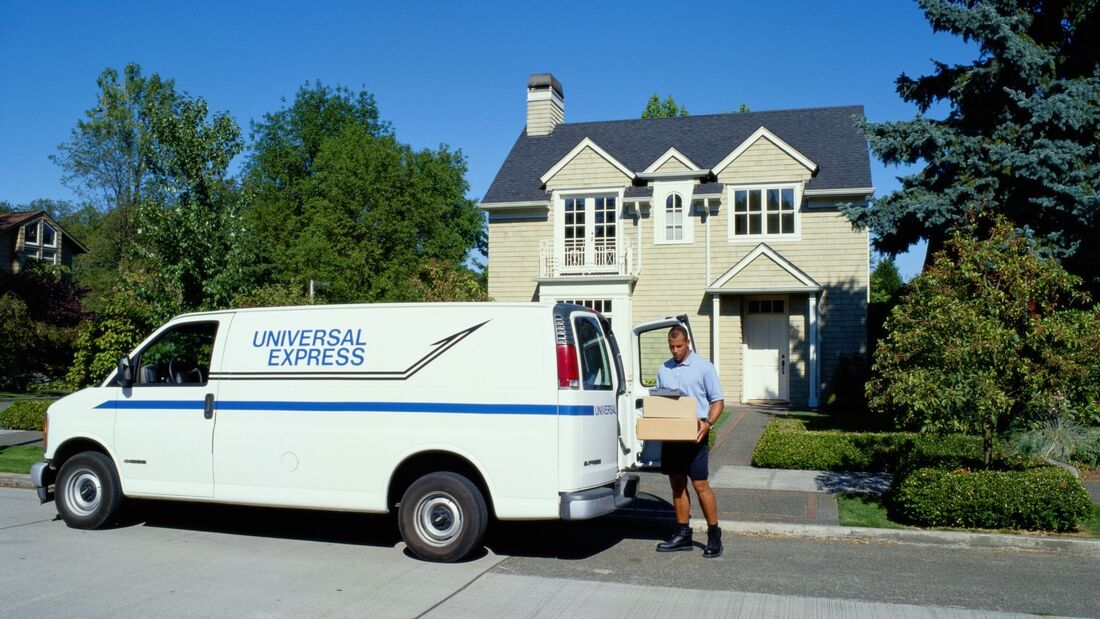








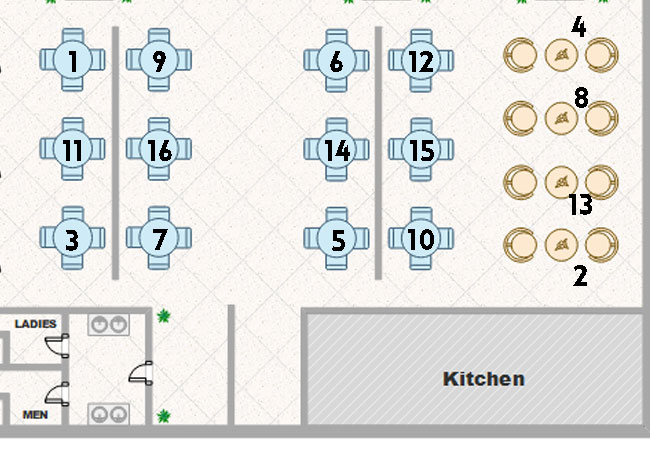
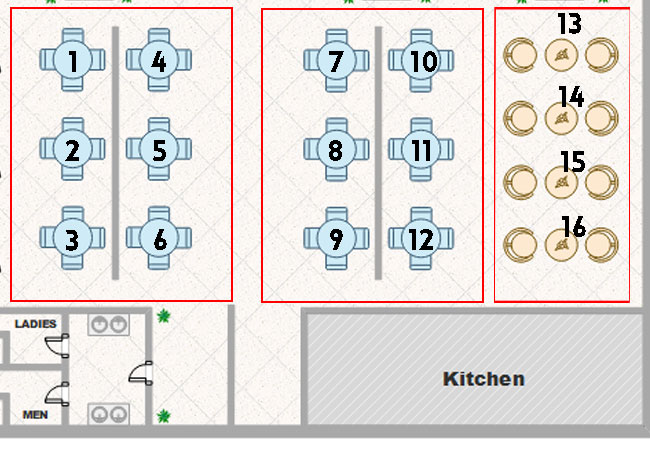





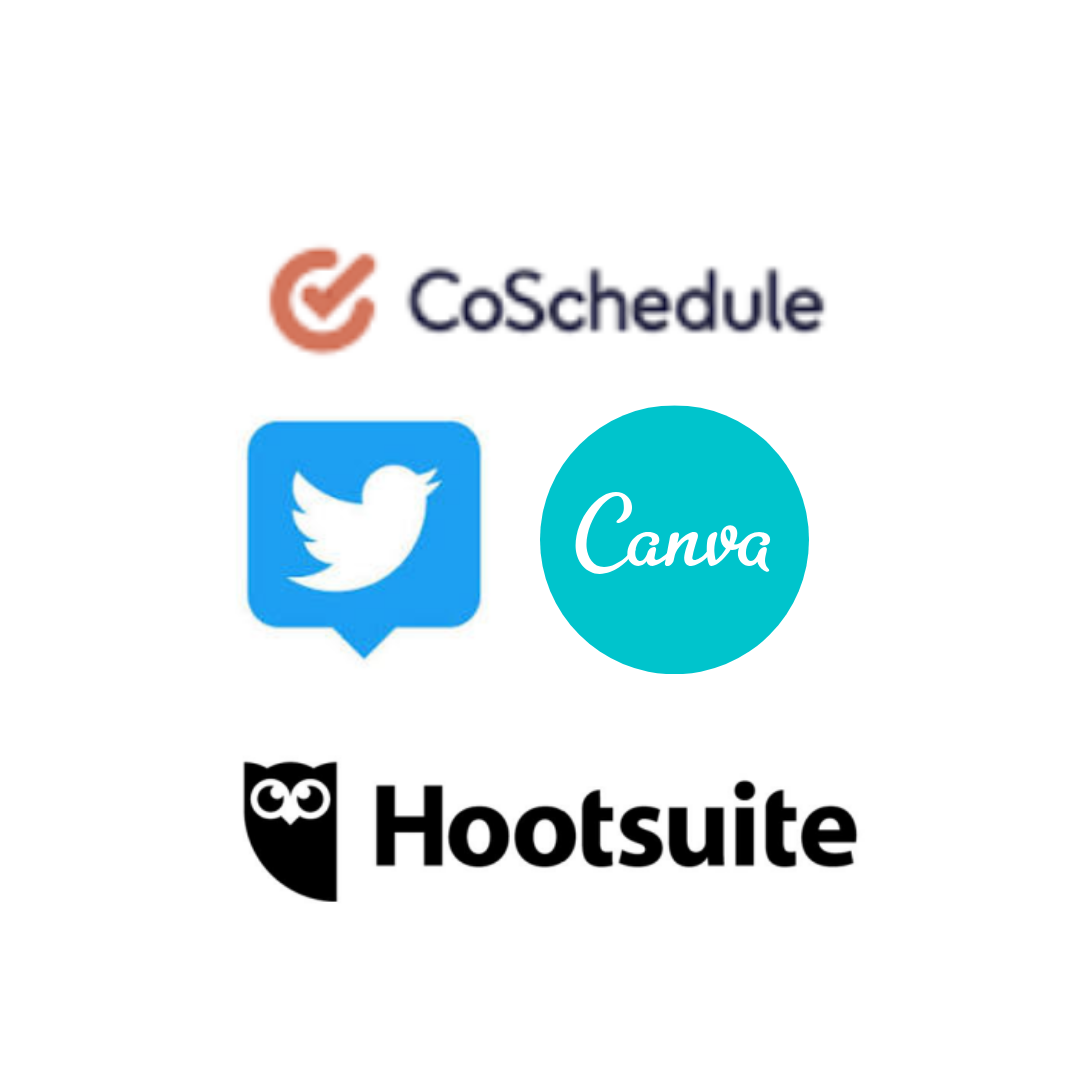
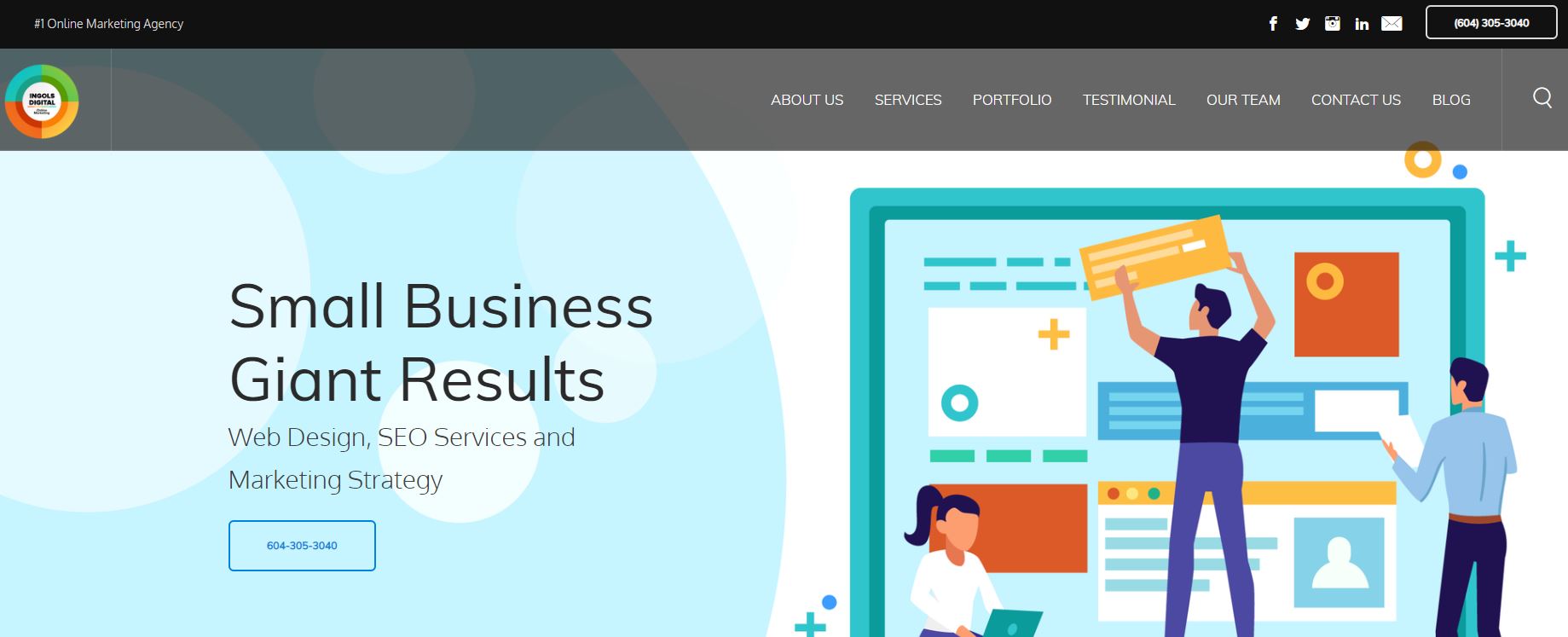
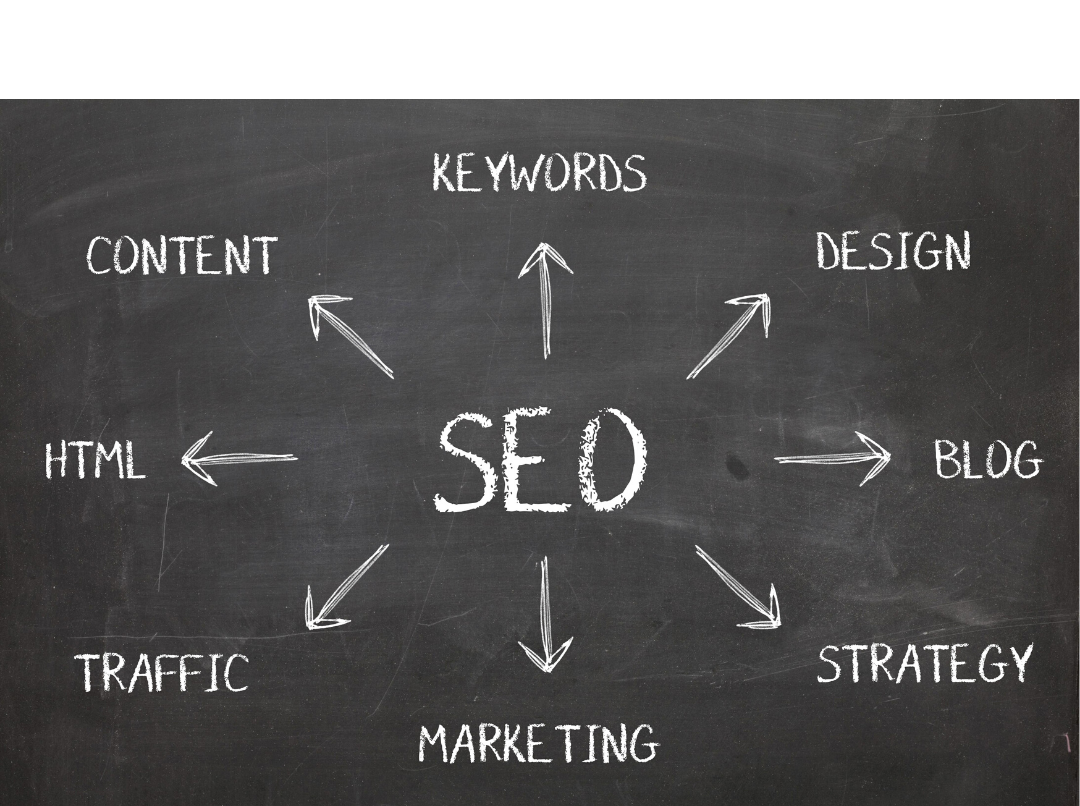
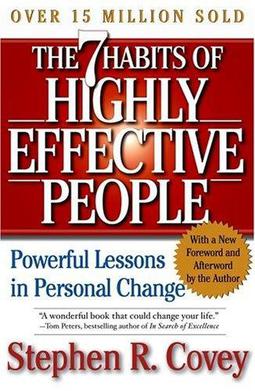
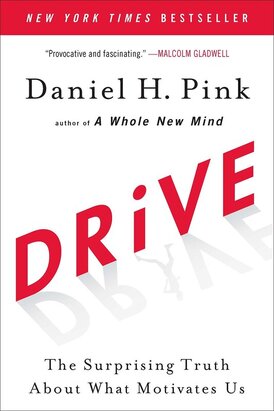
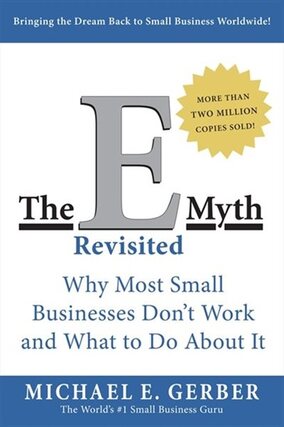
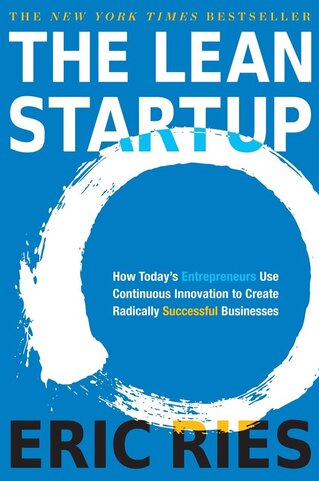
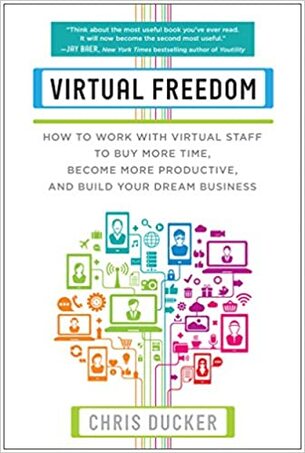

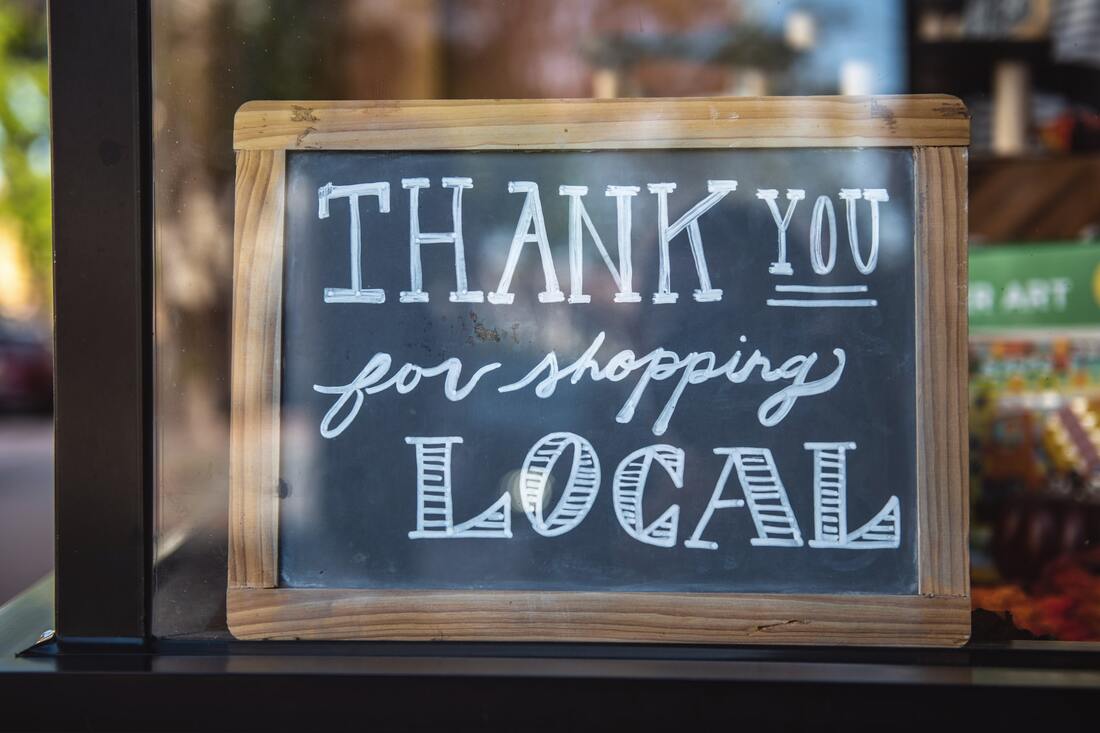



 RSS Feed
RSS Feed
6/11/2020
2 Comments